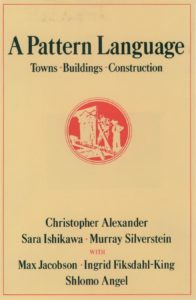Legos for Developers
A modular approach to WordPress Development
Outline
Pattern Language
What is Atomic Design
What is Modular Design
Advantages of using Atomic & Modular Design
Atomic & Modular Design Process
Gutenberg and Atomic design
THE PATTERN LANGUAGE

253 patterns for towns, buildings, and construction
offices, workshops, and public buildings
- 146. FLEXIBLE OFFICE SPACE
- 147. COMMUNAL EATING
- 148. SMALL WORK GROUPS
- 149. RECEPTION WELCOMES YOU
- I50. A PLACE TO WAIT
What is Atomic Design
Atomic design is a methodology composed of five distinct stages working together to create interface design systems in a more deliberate and hierarchical manner. The five stages of atomic design are: Atoms. Molecules. Organisms. Templates. Pages. – Brad Frost
Atoms
molecules
organisms
What is Modular Design?
-Modular web design is comprised of two types of patterns Content Patterns and Display Patterns
Content Patterns
“a solution to a recurring design problem, such that you could use the solution many times and never use it in the same way twice.”
-Nathan Curtis
Display pattern
Display pattern describes a specific rendering and can be applied to multiple types of Content patterns.
Content Pattern
Display Pattern
Advantages of using Modular Design Methodology
Dry Code
More collaborative and iterative process
Empower admins and content editors
Dry - Don't Repeat Yourself
WaterFall is Broken
More collaborative and iterative process
Agile With Atomic Design
Empower admins and content editors
Modular Design Process
Identify Patterns
Categorize Patterns
Categorize patterns
Content Pattern – WP editor Gutenberg Blocks
Design Pattern – HTML & SCSS
Organize you SCSS
Atoms – Color, Typography, Iconography – Global SCSS
Molecules – Theme styles, layout, utils
Organisms – A SCSS file for each Block